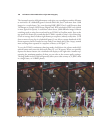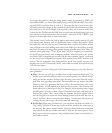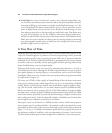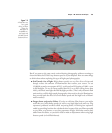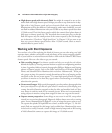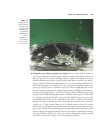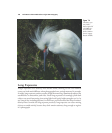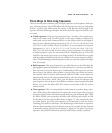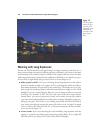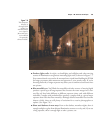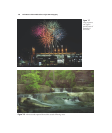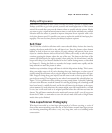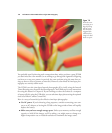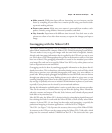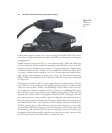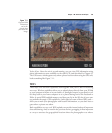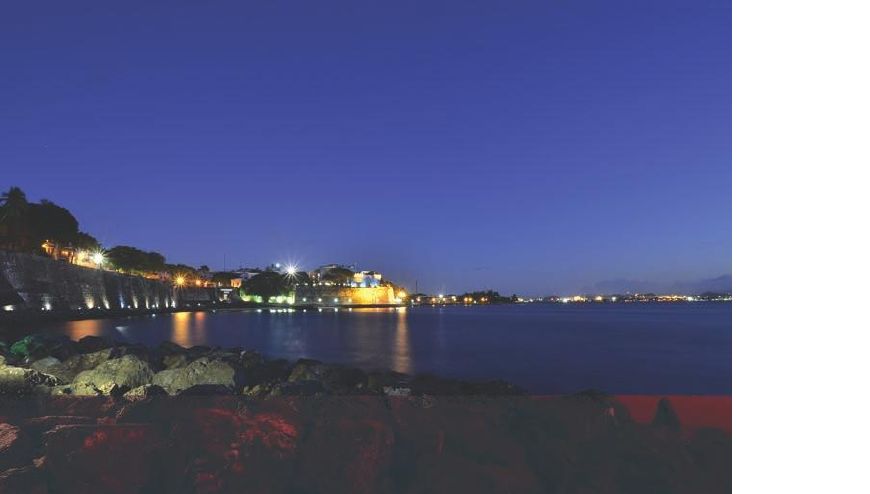
Working with Long Exposures
Because the D7000 produces such good images at longer exposures, and there are so
many creative things you can do with long exposure techniques, you’ll want to do some
experimenting. Get yourself a tripod or another firm support and take some test shots
with long exposure noise reduction both enabled and disabled (to see whether you pre-
fer low noise or high detail) and get started. Here are some things to try:
■ Make people invisible. One very cool thing about long exposures is that objects
that move rapidly enough won’t register at all in a photograph, while the subjects
that remain stationary are portrayed in the normal way. That makes it easy to pro-
duce people-free landscape photos and architectural photos at night or, even, in full
daylight if you use a neutral-density filter (or two) (or three) to allow an exposure
of at least a few seconds. At ISO 100, f/22, and a pair of 8X (three-stop) neutral-
density filters, you can use exposures of nearly two seconds; overcast days and/or
even more neutral-density filtration would work even better if daylight people-van-
ishing is your goal. They’ll have to be walking very briskly and across the field of
view (rather than directly toward the camera) for this to work. At night, it’s much
easier to achieve this effect with the 20- to 30-second exposures that are possible,
as you can see in Figure 7.6.
■ Create streaks. If you aren’t shooting for total invisibility, long exposures with the
camera on a tripod can produce some interesting streaky effects. Even a single 8X
ND filter will let you shoot at f/22 and 1/6th second in daylight.
David Busch’s Nikon D7000 Guide to Digital SLR Photography188
Figure 7.5
A locking cable
release can give
you long time
exposures, such
as this 60 sec-
ond shot in San
Juan, Puerto
Rico.



